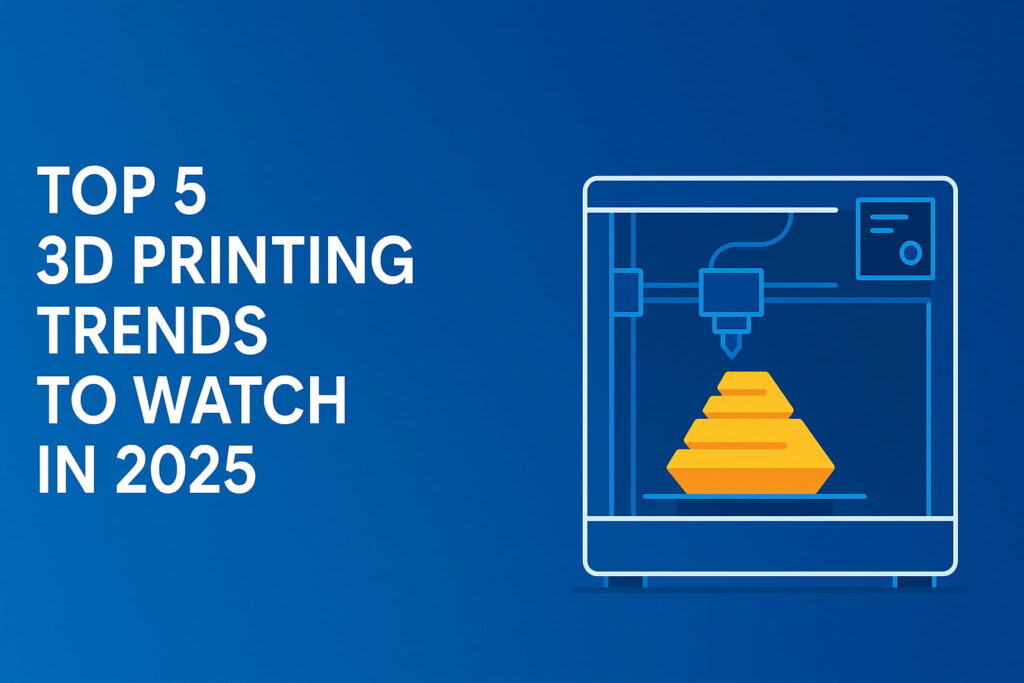
- +91 8055996347
- info@3dreality.in
- Chapru nagar square, CA road, Nagpur, Maharashtra-440008

3D printing, also known as additive manufacturing, has come a long way from just being a prototyping tool. Today, it’s revolutionizing industries — from healthcare and construction to fashion and automotive. As we move into 2025, it’s clear that the 3D printing landscape is evolving faster than ever.
So, what’s next for this transformative technology? Whether you’re a hobbyist, business owner, or just curious about what’s brewing in the world of innovation, here are the top 5 3D printing trends to keep your eyes on in 2025.
Sustainability is more than just a buzzword in 2025 — it’s a necessity. With growing environmental concerns, the 3D printing industry is stepping up by embracing eco-friendly and biodegradable materials.
In short, green 3D printing isn’t just good for the planet — it’s also good for business. Consumers are actively choosing brands that align with sustainable values.
Designing complex 3D models used to be a slow, manual process. But in 2025, AI and machine learning are completely changing the game.
Thanks to AI, creating 3D models is faster, smarter, and more accessible — even for those with limited design experience.
One of the most exciting developments in 3D printing is happening in the medical field. In 2025, personalized healthcare solutions will be more common than ever.
3D printing is helping doctors deliver better care tailored to individual patients — quickly, affordably, and accurately.
Forget mass production. The future is personalized. With 3D printing, businesses can now offer custom-made products on demand, reducing inventory and production costs.
This shift is redefining how consumers interact with products, making them a part of the design journey.
Why choose between traditional and 3D printing methods when you can combine both? In 2025, more manufacturers are adopting hybrid techniques to get the best of both worlds.
This integration is creating smarter, more flexible manufacturing systems that are transforming industries.
The world of 3D printing in 2025 is smarter, greener, and more versatile than ever before. Whether it’s reshaping healthcare, supporting sustainability, or transforming how products are made, these trends are just the beginning.
For individuals and businesses alike, now is the perfect time to explore how 3D printing can add value, not just to what you make, but how you make it.